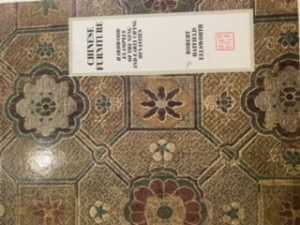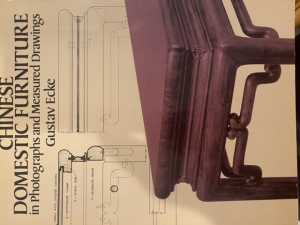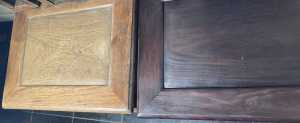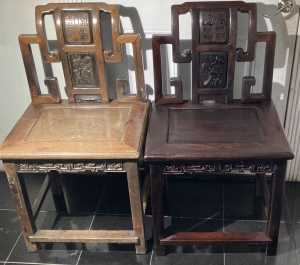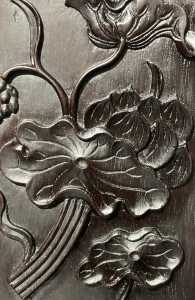The Chinese and Asian Art Forum. For Fans, Collectors and Dealers.
 Basic Rules For the BidAmount Asian Art Forum: Talk about whatever you want. You can even discuss and offer things that are for sale if they are authentic. Maximum image file size per post is 2 MB. Images of 700pxl x 700pxl are optimal if saved at a medium resolution. Be respectful of others and enjoy yourself. Click the YouTube link for a brief tutorial on using the forum. You can also EMBED Videos by cutting and pasting from You-Tube, Vimeo etc.
Basic Rules For the BidAmount Asian Art Forum: Talk about whatever you want. You can even discuss and offer things that are for sale if they are authentic. Maximum image file size per post is 2 MB. Images of 700pxl x 700pxl are optimal if saved at a medium resolution. Be respectful of others and enjoy yourself. Click the YouTube link for a brief tutorial on using the forum. You can also EMBED Videos by cutting and pasting from You-Tube, Vimeo etc.
NOTE: To post an item or add a new post, click open the category title from the FORUM LIST, and CLICK the Blue ADD TOPIC button.
@lotusblack Yes, I thought the exact thing!
If he put these chairs on LiveAuctineers, listed them as Zitan, and they were genuinely zitan, how come they didn’t sell?
Well, a few other possibilities ran across my mind.
A- The photos used in the auction showed the current color of the wood, perhaps we’re not detailed enough to show the wood grain, so buyers were not confident in the wood being zitan.
B- The wood is not zitan, but the seller used the presumption of possibly being zitan to try and drive up interest in the chairs.
Psychological warfare is certainly part of the sales process.
What are your thoughts on the carving, construction, and look if the wood, as it pertains to whether or not you’d buy the chairs?
The carving looks very refined good quality. I think the most important part of these chairs are the inscriptions was it added later was it a important gift did someone own these of importance. Do you know what it says isn’t this old writing? The feet have mop ware and the underside is clean and not darkened good signs. But the script needs to be read.
@lotusblack Can you be more specific about what about the carving you like and why?
I’ll post a complete response about what the chairs afterwards.
@greeno107 I know next to nothing about the furniture, but the little bit I have picked up would have led me to believe that based on signs of wear they had some age, and based on the construction and carving they look to be nice quality. I would have not even considered them to be zitan because I'm still baffled by how to determine zitan and huanghuali. The only wood I seem to be getting used to identifying is elm. Speaking of which there is an elm table I have been thinking about buying at a local shop. I should get some pictures and add to this thread. It would be another good study I think. At any rate, I would have determined that $500 would have been an easy price to say yes to for two of these chairs, and if I have the money at the time to spend I would have bought them as you did. John
As a collector, I also have to consider space, usage, dogs, the fact that I already own a late 19th c Chinese hall chair that my husband refers to it as the firewood. My chair is not Zitan, it is far tatty than yours but personally I prefer it as it has a bat.
So much as I like these chairs of yours, as a collector in my current circumstances I would have to pass. That doesn't mean that I wouldn't have bought them if I were you, I probably would have. It would seem a good risk. For me, as I said, I would only have bought these if I knew I could off-load quickly even knowing that the person taking them would make more out of them than me.
Tim, your chairs look dry, they will appear darker after being rubbed with oil, that said, how do you tell zitan from teak? Do you know where they were made? Any place Chinese people lived produced Chinese furniture, how do you tell? I agree they might work best as night stands or hall chairs because they will not be comfortable, place unpopular guests in them so they will not linger. 500.00 seems a good price to me for a reasonable increase in your money, with shipping, it seems you will be in the same boat as the guy who sold them to you. If you show at major antique shows, you may even do better, you would not believe what people get for old beat up farm tables at Roundtop, people with more money than cents/sense as everyone's grandma used to say. Looking for the right look for the weekend "ranch." You may luck onto someone furnishing a Chinese pavilion/pool house. Thanks for livening things up, much appreciated. Sharon
@lotusblack Again, you hit on the important part regarding carving.
While imperial Qing furniture is often highly carved, Ming furniture is almost entirely uncarved… or so it may seem.
Looking more closely, you will notice fine beading, delicate scroll work, and various changes in edging that has been carefully carved out.
So settling aside elaborate carving that screams ‘imperial’, subtle, delicate carving is a key to identifying high quality.
@sharing You are correct! Not only has the wood dried out, but at some point varnish was applied that sealed the wood. Thus not only prevented the moisture from returning into the wood (I’m in humid Florida, so it’s unusual for wood to dry out), but prevented the patina from accumulating evenly.
This was a major contributor to why the wood could not be easily identified.
The chairs are 19th c. side chairs made from very good quality hongmu.
Compare to this pair sold by Christie’s.
https://www.christies.com/lot/lot-a-pair-of-chinese-hongmu-side-chairs-5707610/?sc_lang=zh-CN
Regarding the dealer who sold them to me…
I suspect he didn’t really believe the chairs were zitan, else he would not have priced them at $1,200. And, since the color of the wood was so light, I suspect Chinese buyers had told him the wood was white ‘suanzhi’, a light colored hongmu that is not very desirable among collectors.
So, he probably was thrilled that I accepted his $500 offer.
How did I know it was not white ‘suanzhi’? The carving.
The back splat panels depiction of lotus on one chair, and pomegranate on the other, are deep, delicate, and very artistic.
The archaic scrolling dragon apron is extremely deeply carved, and archaic designs are generally found on 18th c. furniture, or exemplary 19th c. pieces.
And most importantly, the fine corner carving on the seat. It’s an easy detail to overlook, and carving down the edges of the frame of the seat might seem like no big deal, but it definitely is.
White ‘suanzhi’ hongmu is cheap material and not carved finely.
Did I think it was zitan? I was 99% sure it was not zitan, but not because of the way the wood looked. The clue to the wood was that the chair had no arm rests.
Side chairs are lower on the hierarchy of chairs than those with arm rests. Consequently, they are very often made with lesser quality wood.
But, in the case of my chairs, I suspect they were made for a very wealthy family because the quality of the hongmu is extremely high, looking quite similar in color, grain, and density as zitan.
No splits, signs of shrinking, and quite resistant to general wear, these chairs are very good quality .
The natural wear you can see is on the feet… water marks, chips and scratches from being moved about on a floor, and some rounding if the edges is they key fo knowing a piece of furniture is genuine.
As for being a piece composed of recycled parts… thus is not the case with these chairs. The improper use of varnish that lead to irregular development of patina, drying of the wood that lightened the color, and cleaning that focused on smooth surfaces rather than the carved areas, all contributed to the patchwork appearance.
@johnshoe Huanghuali and zitan are a bit tricky, but mostly because collectors (especially beginners) put too much emphasis trying to decipher the grain and color, and not enough time on determining if the type of furniture they are assessing is the type and the quality that would be deserving to be made from zitan or huanghuali.
Look at Ming furniture and Imperial 18th c. furniture sold by Christie’s…..
Forget about the color and grain of the wood.
Are you not taken back by the absolute beauty of the form and or carving?
That should be the first step, then followed by the assessment of the color and grain of the wood.
😍 I love it, Great story. You just made 3000+ on an afternoon. The carving is indeed very well done and not easy to discern from the other chair. You are the American version of the UK Drew Pritchard. Always on the road searching for a bargain.
Thanks for visiting "The BidAmount Asian Art Forum | Chinese Art"
If you sell on eBay, or have a shop feel free to post images and descriptions and links.
Check back often for discussion about the latest news in the Chinese art and antique world. Also find out about the latest Asian art auctions at Sotheby's, Christie's, Bonhams and Tajans.
Auction results for: fine porcelain, ceramics, bronze, jade, textiles and scholar's objects. As well as Japanese, Thai, Vietnamese and other Asian cultures.
Thank you,
Peter Combs
Topics and categories on The BidAmount Asian Art Forum | Chinese Art
Kangxi vases, Kangxi dishes and chargers, Kangxi ritual pieces, Kangxi scholar's objects, Qianlong famille rose, Qianlong enamels, Qianlong period paintings, Qianlong Emporer's court, Fine porcelain of the Yongzheng period. Chinese imperial art, Ming porcelain including Jiajing, Wanli, Xuande, Chenghua as well as Ming jades and bronzes.
The BidAmount Asian Art Forum | Chinese Art
A free Asian art discussion board and Asian art message board for dealers and collectors of art and antiques from China, Japan, Korea, Thailand, Cambodia, Vietnam and the rest of Asia. Linked to all of the BidAmount Asian art reference areas, with videos from plcombs Asian Art and Bidamount on YouTube. Sign up also for the weekly BidAmount newsletter and catalogs of active eBay listing of Chinese porcelain, bronze, jades, robes, and paintings.
The art of calligraphy - and for the ancient Chinese it certainly was an art - aimed to demonstrate superior control and skill using brush and ink. Calligraphy established itself as one of the major Chinese art forms during the Han dynasty (206 BCE - 220 CE), and for two millennia after, all educated men were expected to be proficient at it.
The Museum’s collections of Asian art span nearly five millennia and encompass the cultures of China, the Himalayas, India, Japan, Korea, and Southeast Asia. In 2007, the Museum launched an initiative to create dedicated galleries for the collection, beginning with a gallery for the arts of Korea ...
Chinese art is full of symbolism, in that artists typically seek to depict some aspect of a totality of which they are intuitively aware.
China Online Museum is the finest online museum of Chinese art. It features Chinese calligraphy, painting, ceramics, bronzes, carving, and other artworks.
Chinese Ceramics & Works of Art. Overview Upcoming auctions Contacts Auction results ... Christie’s sales of Chinese ceramics and works of art showcase centuries of Chinese history. Held throughout the year in London, New York, Paris and Hong Kong, they attract a wide audience of collectors and connoisseurs vying for pieces as diverse as ...
Explore Asian Art Week. Contact the Specialist Department. Chinese Paintings ... Senior Specialist, Head of Sale. [email protected]. Tel:+1 212 641 5760. Bid in-person or online for the upcoming auction:Fine Chinese Paintings on 10 September 2019 at New York. Bid in-person or online for the upcoming auction:Fine Chinese Paintings on 10 ...
Discover an abundance of must-see art from all corners of a vast continent at Christie’s NY Asian Art Week. From contemporary classical and Chinese paintings to works with exemplary provenance from the Art Institute of Chicago, our Rockefeller Paza galleries will be full of ancient treasures and contemporary masterworks in a salute to the vibrant arts of Asia.
Sold to benefit The Art Institute of Chicago’s Asian Art Acquisition Fund, the sale features 84 lots with a focus on Ming and Qing porcelains, and offers a rare insight into the taste for collecting Chinese ceramics and works of art in the Midwest from the end of the 19th century through the 1980s. Highlights include two Wanli wucai garlic-head vases, a Qianlong mark and period, blue and ...
Specialist, Chinese Paintings, Christie's London Dr Malcolm McNeill is a Specialist in Chinese Paintings at Christie’s, based in London. He previously worked as an assistant curator of the Chinese collections and the Victoria and Albert Museum in London, as a researcher at the British Museum, and as a translator and tour guide at the National Palace Museum in Taipei.
The Christie's Education 2020 Conference: The Chinese Art Market 18 Jun 2019 Christie’s Education is delighted to announce our first international academic conference in Asia which will take place in Hong Kong from 26-27 November 2020 at the Hong Kong Convention and Exhibition Centre and will run in parallel with Christie’s Hong Kong Autumn Auctions.
The summer Chinese Art sale in Hong Kong will feature works of art from several private collections, including Qing porcelains and textile from the collection of the legendary Chinese art dealer A. W. Bahr (1877–1959), fine gilt bronze Buddhist sculptures from an old Hong Kong collection, an East Asian collection of Qing dynasty wine cups and jades, and a Japanese collection of Song ceramics ...
Sotheby's Chinese Works of Art Department holds two auctions each year in London, New York, Hong Kong and Paris.
Chinese Art - View Auction details, bid, buy and collect the various artworks at Sothebys Art Auction House.
With more than 340 Chinese works of art dating from the Neolithic to the Republic periods, highlights of this sale include a selection of Qing Imperial monochromes from the collection of Arnold and Blema Steinberg, early ceramics from the Art Institute of Chicago and Chinese porcelain and works of art from the collection of Henry Arnhold.
Results: Sotheby's Asia Week achieved $52.4 million in six strong auctions, exceeding pre-sale estimates. With 76.5% of lots sold and 60.3% of lots surpassing high estimates, the Asian art sales at Sotheby's indicate continued collector interest in the finest works of art from China, India and and the Himalayas.
Today's sale of Important Chinese Art will proceed as planned with sessions at 10 AM and 2 PM EDT. Sotheby's will be monitoring the weather conditions throughout the day and will be available to coordinate alternative bidding options should conditions make it difficult for clients to attend the auction in person.
Bonhams Chinese Art department is renowned for offering the finest works of art representing the richness and breadth of China's artistic heritage, particularly Imperial porcelain, white and spinach green jades, cloisonné and Buddhist art. Specialised international auctions are held globally, including London, Hong Kong and San Francisco.
Bonhams : Chinese Works of Art We use cookies to remember choices you make on functionality and personal features to enhance your experience to our site. By continuing to use our site you consent to the use of cookies. Please refer to our privacy and cookie policies for more information.
Bonhams Fine Art Auctioneers & Valuers: auctioneers of art, pictures, collectables and motor cars. We use cookies to remember choices you make on functionality and personal features to enhance your experience to our site. By continuing to use our site you consent to the use of cookies. ... Chinese Art (US) General enquiries
Bonhams : Fine Chinese Art We use cookies to remember choices you make on functionality and personal features to enhance your experience to our site. By continuing to use our site you consent to the use of cookies. Please refer to our privacy and cookie policies for more information.
Bonhams Fine Art Auctioneers & Valuers: auctioneers of art, pictures, collectables and motor cars Bonhams : Asian Art We use cookies to remember choices you make on functionality and personal features to enhance your experience to our site.
Bonhams are international auctioneers of fine Chinese and Japanese art. We specialise in rare Imperial and Export Chinese ceramics and works of art, as well as Japanese ceramics, fine and decorative works of art from the Neolithic Period to the 20th century. View on map
Bonhams Fine Art Auctioneers & Valuers: auctioneers of art, pictures, collectables and motor cars. We use cookies to remember choices you make on functionality and personal features to enhance your experience to our site. By continuing to use our site you consent to the use of cookies. ... Asian Art Bonhams. Work. 22 Queen St.
